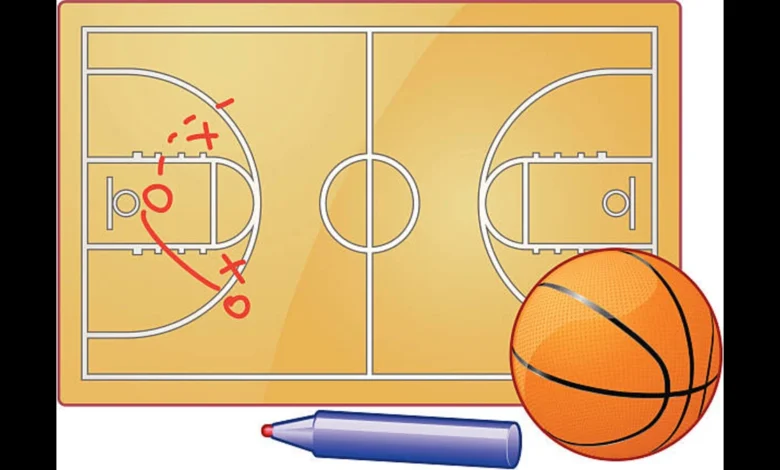
Introduction to the Intersection of Geometry and drawing:cul23ybyzfm= basketball
drawing:cul23ybyzfm= basketball is more than just a game of skill and athleticism; it’s an intricate dance on a meticulously designed stage. With its precise lines and angles, the court serves as both a playground and a laboratory for players to explore their potential. Have you ever wondered how geometry weaves into the very fabric of basketball? Every detail plays a critical role in shaping gameplay strategies, from the court’s layout to the construction of hoops. As we dive into this fascinating intersection of geometry and basketball, you’ll discover how understanding these elements can elevate your performance on the court. Get ready to see basketball through a new lens that highlights physical prowess, spatial awareness, and precision.
The Dimensions of a Standard drawing:cul23ybyzfm= basketball Court
A standard drawing:cul23ybyzfm= basketball court has precise dimensions that create a balanced playing environment. In professional leagues like the NBA, it measures 94 feet long and 50 feet wide. This size allows for ample space to maneuver, shoot, and strategize.
The key areas on the court include the free-throw line, three-point arc, and critical area or paint. The free-throw line is 15 feet from the backboard, while the three-point line varies by league—22 feet away at its closest point in the NBA.
Understanding these measurements is crucial for players. They dictate how far you can shoot and where you should position yourself during gameplay. Each inch matters when making quick decisions on defense or offense.
These dimensions shape gameplay and influence how coaches design their strategies around player movements and shooting zones.
Understanding the Lines and Measurements on a Basketball Court
A drawing:cul23ybyzfm= basketball court is a canvas of precision. Each line serves a specific purpose, contributing to the game’s flow.
The three-point arc is one of the most crucial features. It restricts where players can score extra points with long-range shots. Understanding this distance can dramatically change shooting strategies.
Free throw lines also play a vital role in gameplay. Positioned 15 feet from the basket, they dictate how players approach scoring under pressure.
The critical area, or paint, allows for strategic positioning during offensive and defensive plays. It’s where many battles occur for rebounds and inside scores.
Every inch counts on this court. Players who grasp these measurements can manipulate their movements effectively, gaining an edge over opponents while executing plays accurately and skillfully.
Different Types of Hoops: From Portable to In-Ground
drawing:cul23ybyzfm= basketball hoops come in various types, each catering to different needs and spaces. Portable hoops are famous for their convenience. They can be moved easily, allowing players to set up games wherever they desire.
In-ground hoops offer a more permanent solution. These systems require installation but provide stability and durability that portable options may need to improve. Serious players often prefer this type due to its professional feel.
Wall-mounted hoops also exist, perfect for tighter spaces like driveways or garages. They save room while delivering the same experience as traditional setups.
Each hoop type influences how you play and practice your skills. Whether shooting solo or playing with friends, choosing the correct setup can significantly impact your game-day experience. The variety ensures that everyone can enjoy drawing:cul23ybyzfm= basketball regardless of space constraints or the level of commitment needed.
How Geometry Affects Shooting Techniques and Strategies in drawing:cul23ybyzfm= basketball
Geometry plays a crucial role in basketball shooting techniques. Players must understand angles to sink shots consistently. The ball’s arc as it travels toward the hoop is not just a random trajectory; it’s a carefully calculated path shaped by physics.
When aiming for the basket, players consider their distance from the hoop and adjust their angle accordingly. A higher release point can increase the chances of making a shot because it allows for a steeper angle, reducing the risk of hitting the rim.
Furthermore, positioning on the court influences strategy. Players often seek optimal spots where geometry favors them—like corners or elbows—to maximize scoring opportunities.
Understanding these geometric principles enables athletes to refine their technique and improve accuracy during games. This knowledge transforms shooting from instinct into an art form based on measurement and precision.
The Role of Geometry in Court Design and Player Positioning
Geometry plays a crucial role in the design of drawing:cul23ybyzfm= basketball courts. The layout ensures that players can navigate effectively while maintaining optimal spacing. Each line and arc serves a specific purpose, influencing gameplay and strategy.
Consider the three-point line. Its distance from the basket creates opportunities for longer shots, challenging defenses to extend their coverage. Players must understand these dimensions to position themselves advantageously.
Zones on the court are equally significant. Each section requires different skills and tactics, from the paint area to perimeter spaces. Knowing where to stand can dramatically change offensive dynamics.
Player positioning also reflects geometric principles. Spacing between teammates helps create passing lanes and scoring opportunities while minimizing defensive pressure. Effective movement patterns allow teams to exploit geometry strategically during games, enhancing overall performance on the court.
Conclusion: How an Understanding of Geometry Can Improve Your Game
Understanding the intricate relationship between geometry and drawing:cul23ybyzfm= basketball can significantly enhance your performance on the court. When you grasp the dimensions of a standard basketball court, you begin to appreciate how every line and measurement plays a role in gameplay. This knowledge allows players to position themselves strategically, enhancing their shooting angles and accuracy.
Moreover, recognizing how different hoop types function within these geometrical spaces helps players make informed decisions about their equipment choices based on personal style and playing conditions. Knowing how each affects your game is crucial, whether you’re using a portable setup or an in-ground hoop.
Incorporating geometric principles into your shooting techniques refines your skills and boosts confidence during play. The more aware you are of angles and distances, drawing:cul23ybyzfm= basketball the better equipped you’ll be to tackle defensive strategies effectively. Embracing this understanding paves the way for improved individual performance and enhanced teamwork on the court. Elevate your game by diving deeper into these spatial dynamics—your next shot may depend on it!





